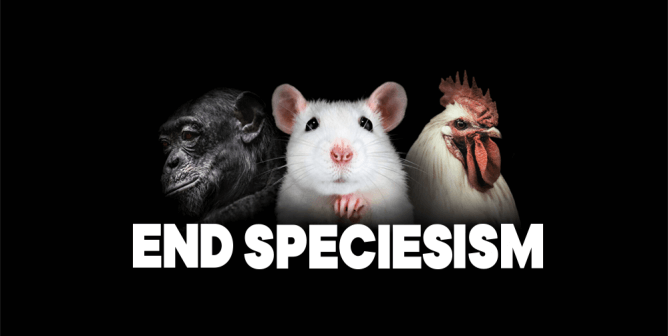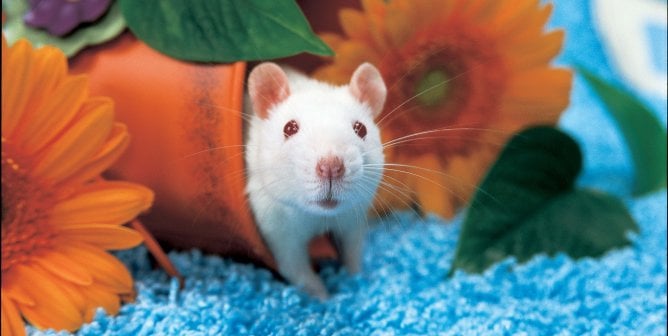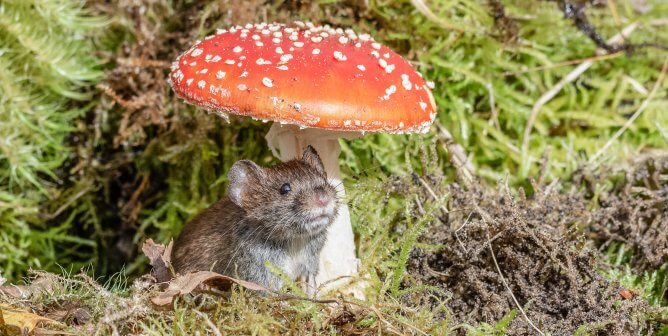Curiosity-Driven Experiments: Violence Pretending to Be Science
Many people acknowledge that experimenting on animals is cruel, but most don’t realize that this twisted practice isn’t even necessary for human health. Let’s set the record straight: While some experimenters pretend that their cruel tests on animals might lead to treatments or cures for humans (even though the overwhelming majority of animal tests never lead to any human-relevant treatments), many experiments on animals being conducted right now have no intended relevance to humans at all. These blatantly useless animal tests are called curiosity-driven experiments.
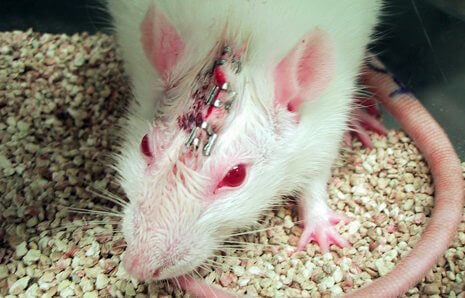
What Are Curiosity-Driven Experiments?
As the name implies, these kinds of “studies”—which don’t even pretend to help humans—are done out of human curiosity. The decision to use animals’ bodies to satisfy curiosity is an example of speciesism: the belief that animals are nothing more than means to human ends. Anyone with a conscience knows experimenting on animals just because we can is wrong.
Animal experimenters are legally allowed to burn, shock, poison, isolate, starve, forcibly restrain, addict to drugs, and brain-damage animals. No experiments, regardless of how trivial or painful they may be, are prohibited by federal law. Even when valid non-animal research methods are available, experimenters aren’t required to use them instead of animals.

More than 100 million animals suffer and die in U.S. laboratories every year. They’re sickened in chemical, drug, food, or product tests or tormented and killed in curiosity-driven experiments—and there is virtually nothing beneficial to human patients to show for it. These experiments are ongoing all across the country, and most are just slight variations of ones that have already been conducted for years, often yielding “results” that have long been known.
Curiosity-driven experiments are largely funded by taxpayer dollars. Experimenters hope their studies will be published in scientific journals as a sort of “show and tell,” allowing them—and the respective universities where they perform these tests—to continue to seek more funding. Experimenters who conduct curiosity-based research are recognized for how much they publish, not for the contributions they make to scientific or medical discoveries.
What Are Some Examples of Curiosity-Driven Experiments?
Calling animal experiments a “necessary evil” would be false flattery, as they don’t even qualify as necessary—just evil. These examples prove it:
At Humboldt University of Berlin
Experimenters implanted electrodes into rats’ brains and then killed them afterwards for dissection. Why? To claim that rats like to play hide-and-seek. Obviously, nothing relevant or useful was discovered—the results were just slaughtered animals who wanted to live and a misleading headline or two. All this really proves is that rats are playful and social animals who need mental stimulation and companionship to thrive—but we already knew that.
At Colorado State University
Experimenter Gregory Ebel traps American crows and robins and house sparrows, infects them with West Nile virus (WNV), and observes as the virus ravages their bodies. He hasn’t developed a cure, a vaccine, or any treatments for WNV—in part, because he’s not trying to. He just does this to animals to understand the behavior of the virus in different species. This means our tax dollars are paying for someone to harm wildlife and divert public health dollars from actually helping humans—and nothing more.
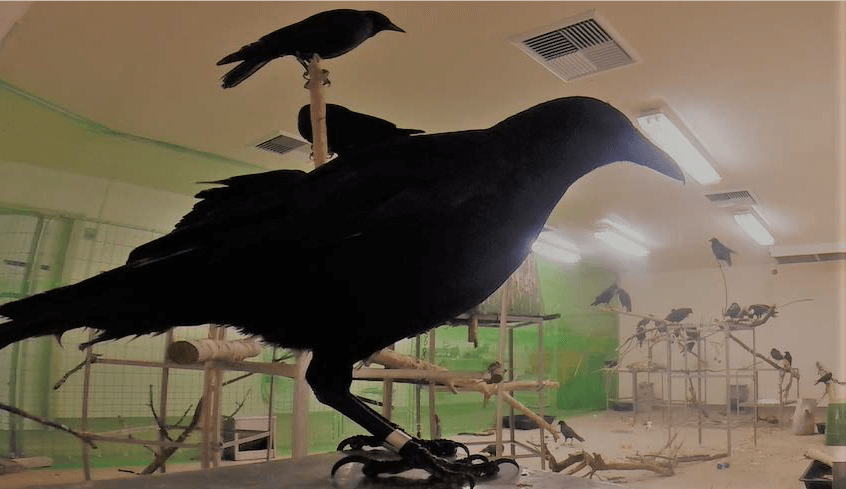
Crows partner for life and form deep familial bonds. Whenever you see a small group of crows foraging for food, you’re seeing a family—and they hold funerals when a loved one dies. Their language is so complex that researchers have had little success creating a crow-human “dictionary.” While different sequences of “caws” relay different information, tempo, pitch, and inflection can change the meaning.
At the University of Delaware
Experimenter Tania Roth has been injecting baby rats with opioids, forcing alcohol down their throats, repeatedly shocking their feet, stuffing pregnant mothers into narrow tubes and blasting them with strobe lights, and dropping rats into tanks of water. She purports that this is a way to replicate early childhood abuse and trauma in humans, but she doesn’t seem to be looking for any way actually to help abused children. She has also restrained rats in a little Plexiglas enclosure smeared with cat food and exposed them to a cat to make them fear for their lives, among other horrors, and PETA has shut down all her absurd claims.
Roth has spent nearly $2 million in public funds on this stuff, even though she hasn’t produced a single novel piece of information for abused children. Imagine what $2 million of healthcare coverage could have done for an underprivileged community. In fact, 47% of all research funding from the National Institutes of Health (NIH) budget (which is tens of billions annually) is wasted on cruel and useless animal experiments.
At Johns Hopkins University
Experimenter Shreesh Mysore keeps barn owls caged in a fluorescent-lit basement. There, he cuts into their skulls, implants electrodes into their heads, cements a stainless steel bolt to the base of their skulls in order to restrict their head movement, and restrains the fully conscious birds in plastic tubes or tight jackets for up to 12 hours at a time. He clamps their eyes open and bombards them with bursts of noise and light while poking around at neurons in the conscious animals’ brains. He mutilates their brain tissue so severely by moving the electrodes around that the owls become “unusable” to him—at which point he kills them. He admits that his experiments are painful for the birds yet tries to justify them by claiming to study human attention-deficit/hyperactivity disorder (ADHD), but he still doesn’t seem to be aiming at any kind of treatment.
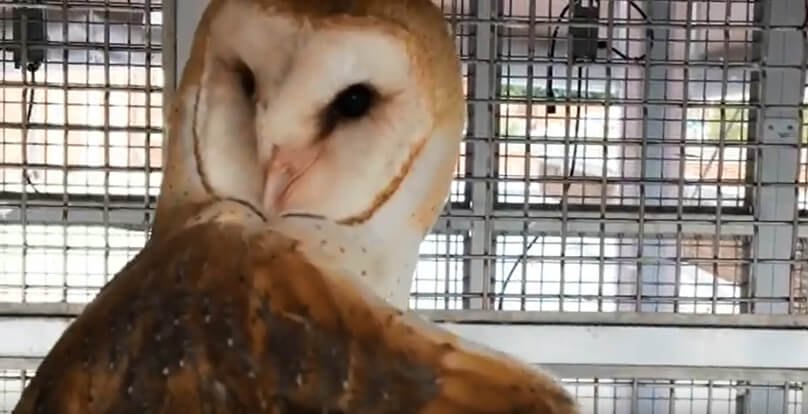
Barn owls don’t get ADHD, and they have vastly different auditory and visual systems than humans do. Moreover, the owls’ confinement to such an unnatural environment and many other glaring factors make this experiment a hoax. Even so, Mysore has received more than $1 million in funding from Johns Hopkins University (JHU) and $1.3 million of your tax dollars from NIH. JHU receives more funding from NIH than any other university in the country—$674 million in 2018 alone.
At Louisiana State University
Experimenter Christine Lattin terrorizes birds. Among other horrors, birds in her lab experienced the following:
- They were tormented with the sounds of a predator, such as a hawk.
- They were captured along with their babies and killed.
- They were pumped full of sex steroids, scared, and killed.
- They were trapped and taken from their homes in nature.
- They were rattled and rolled around in cages by laboratory staff.
- They were physically restrained for 30 minutes, four times per day.
- They were fed crude oil.
- They were kept in captivity for several months before being killed.
- They were “hole-punched” without pain medication.
Some birds were so distressed that they lost 11% of their bodyweight within five days of capture. As many as 26 feathers were pulled from their bodies at a time, without any pain relief. Capsules were even surgically implanted under the skin of some of them to administer drugs.
Lattin has tormented and killed birds in bizarre experiments since 2008, yet her huge pile of dead sparrows has only resulted in “discoveries” such as that “birds do not like captivity” and “birds think crude oil tastes icky.” Her flimsy excuses for these maniacal practices are all over the place, and PETA has debunked all of them.
At the University of Washington
Experimenter Albert Fuchs has spent more than 50 years conducting experimental surgeries on monkeys, in which he cuts a hole in their skull, inserts electrodes into their brain, and implants wire coils in their eyes. He then straps them in a restraint chair with their head bolted in place and deprives them of food or water so that they’ll comply during the tests. He claims the purpose of all this is to determine which part of the monkey’s brain controls eye movement.
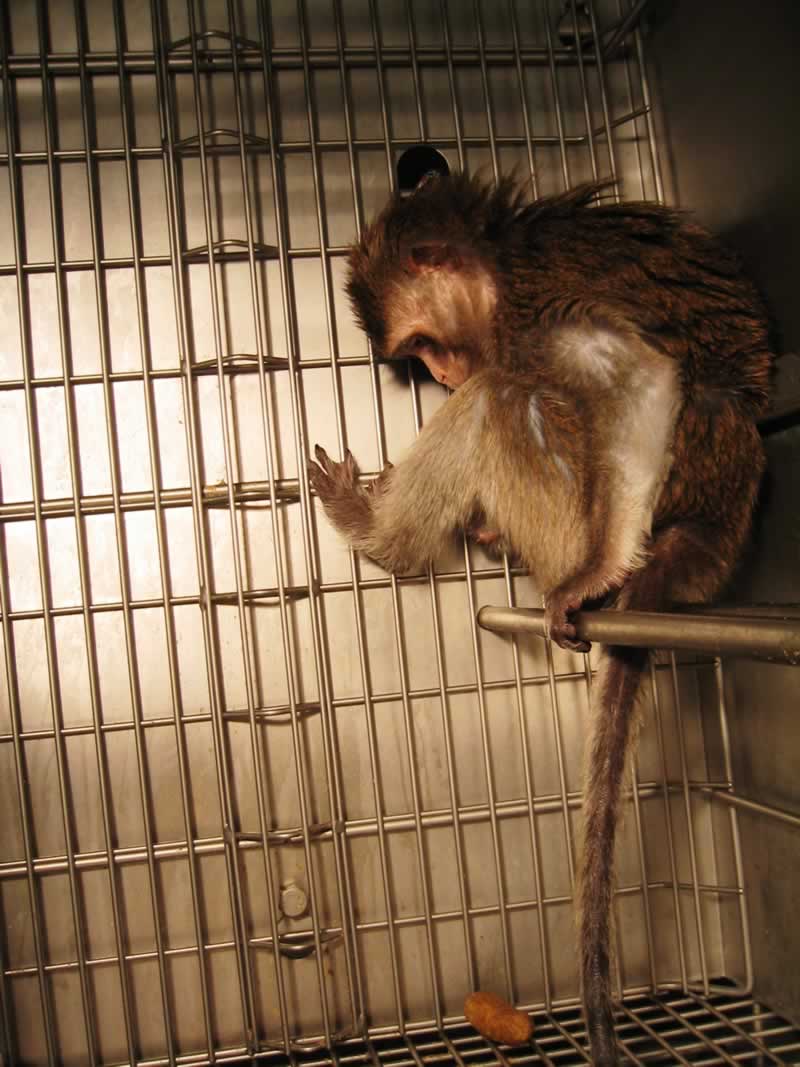
This was just a small sample of the countless ways experimenters have tortured animals in curiosity-driven experiments throughout history. PETA’s interactive timeline, “Without Consent,” features almost 200 stories of cruel experiments from the past century, including ones in which dogs were forced to inhale cigarette smoke for months, mice were cut up while still conscious, and cats were deafened, paralyzed, and drowned. Visit “Without Consent” to learn about more harrowing animal experiments throughout history and how you can help create a better future for living, feeling beings.
Take Action for Monkeys Used in Experiments
Join PETA’s call: Urge UW to end experiments on primates and transfer the animals to sanctuaries.
At NIH
NIH is currently funding a project called “Neural Substrates of Reward Processing and Emotion,” in which experimenters saw open monkeys’ heads, inject toxins into their brains, and vacuum or burn parts of their brains. Then the monkeys are locked inside a small black box and deliberately frightened with rubber snakes and spiders repeatedly until experimenters decide that it’s time to kill them. The experimenter responsible for this cruelty admitted publicly that her results were seriously flawed. Yet NIH saw fit to fund these experiments for more than 30 years with a total of more than $36 million.
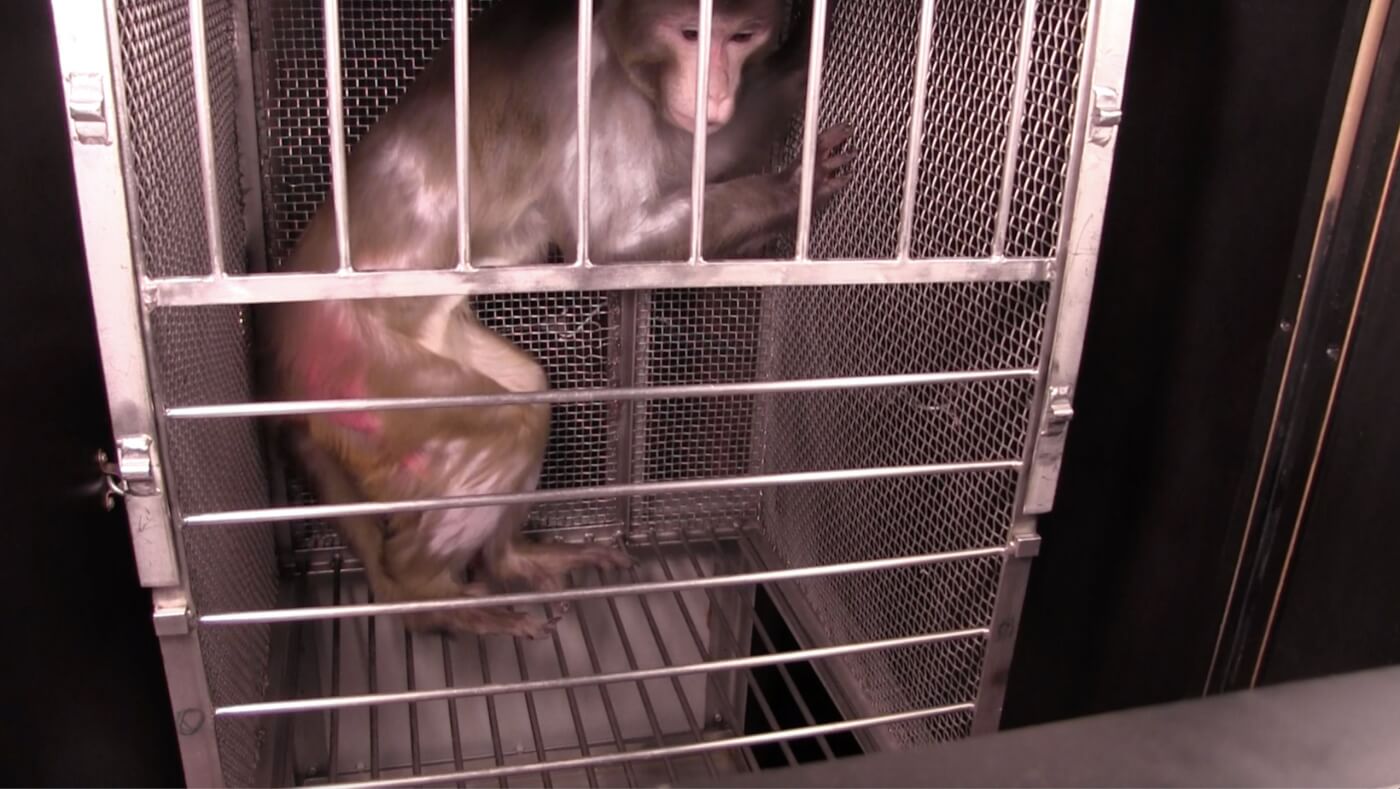
How Do Experimenters Get Away With Such Blatant Animal Abuse?
None of these experiments was necessary, and they were all violently cruel to sensitive animals and a huge waste of taxpayer dollars that could have instead gone to help humans and communities in need.
Most countries have grossly inadequate regulatory measures in place to protect animals from suffering and distress or to prevent them from being used when a non-animal approach is readily available.
In the U.S., the species most commonly used in experiments are mice, rats, birds, fish, reptiles, and amphibians. They constitute 99% of all animals in laboratories but are specifically exempt from the minimal protections of the federal Animal Welfare Act. Many laboratories that use only these species are not legally required to provide animals with pain relief or veterinary care, to consider non-animal testing methods, to have an institutional committee review their proposed experiments, or to be inspected by the U.S. Department of Agriculture (USDA) or any other entity.
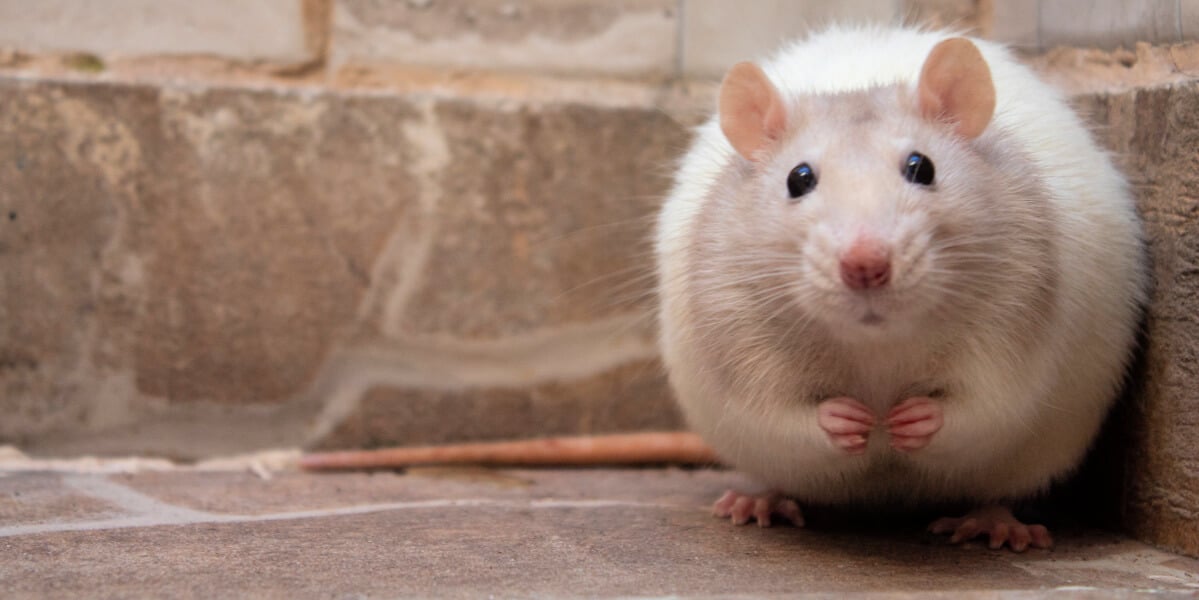
Even the laboratories that are overseen by the USDA get away with murder. Consider that there are more than 11,000 animal experimentation facilities that the agency is meant to regulate and only 120 USDA inspectors to oversee their operations.
Are All Animal Experiments Unnecessary?
A 2014 review published in The BMJ found that “even the most promising findings from animal-based research often fail in human trials and are rarely adopted into clinical practice.” Up to 89% of animal studies could not be reproduced. Reproducibility is a fundamental step needed to confirm the validity of scientific results.
In an article published in JAMA: The Journal of the American Medical Association, researchers found that medical treatments developed in animals rarely translated to humans. Artificially induced diseases in animals in a laboratory are never identical to those that occur naturally in humans. In addition, because animal species differ from humans in many significant ways, it’s highly unlikely that results from animal experiments could be correctly interpreted and applied to the human form of the condition in a meaningful way.
According to former National Cancer Institute Director Dr. Richard Klausner, “We have cured mice of cancer for decades, and it simply didn’t work in humans.” At least 85 HIV/AIDS vaccines have been successful in primate studies, and all of them have failed to protect humans.
How Has the Public Been So Duped?
Approximately 47% of NIH-funded research involves animal experiments, and in 2019, NIH budgeted nearly $40 billion for research and development. You do the math.
Yet despite the vast amount of public funds being used to pay for experiments on animals, it’s nearly impossible for the public to obtain current and complete information regarding those that are being conducted in their own communities or being funded with their tax dollars.
Are There Any Other Options for Experiments?
Cutting-edge non-animal research methods are available and have been shown to be more accurate than crude animal experiments. Alternatives to animal testing include using human cells and tissues (also known as in vitro methods), advanced computer-modeling techniques (often referred to as in silico models), and studies with human volunteers. These and other non-animal methods are not hindered by species differences that make applying results to humans difficult, unreliable, or impossible, and they usually take less time and money to complete.
A Pew Research Center poll found that 52% of U.S. adults oppose the use of animals in scientific research, and other surveys suggest that the shrinking group that does accept animal experimentation does so only because of the incorrect belief that it is necessary for medical progress. The vast majority of animal experiments don’t contribute to human health improvements, so join PETA today in ending them:

